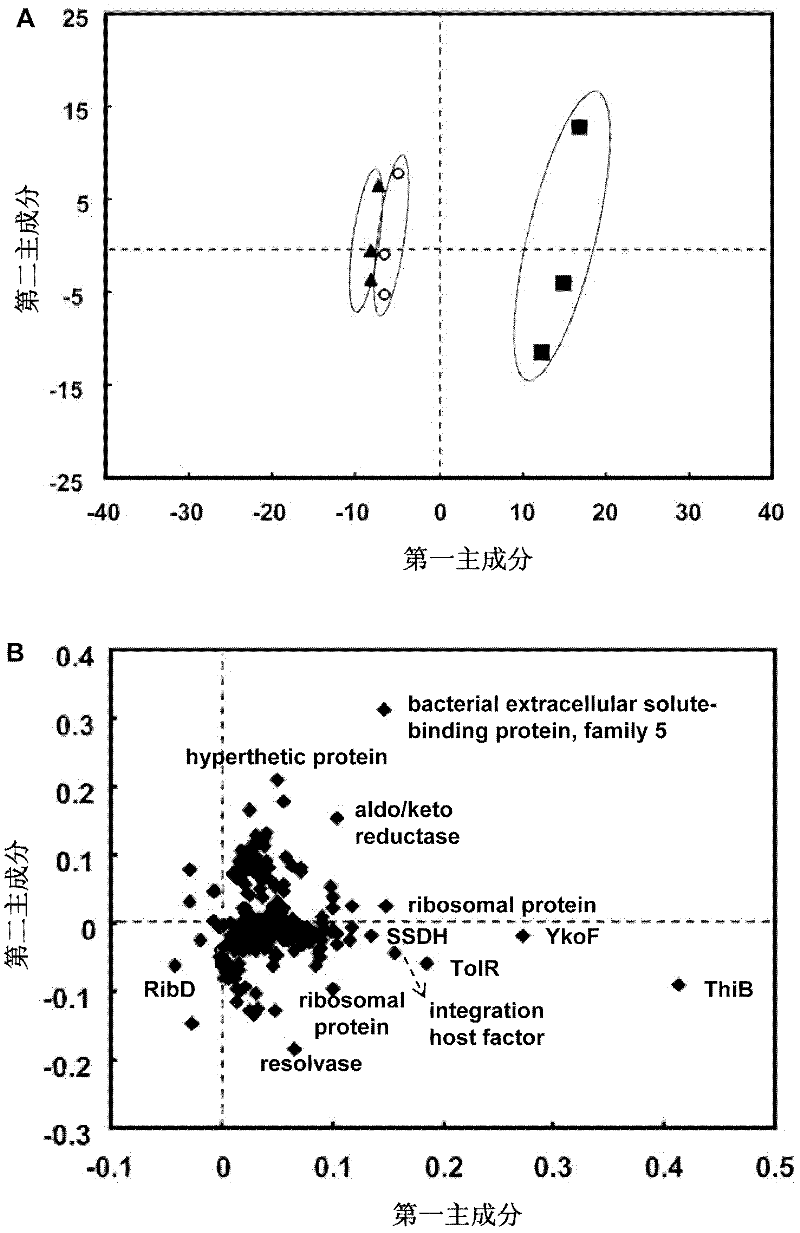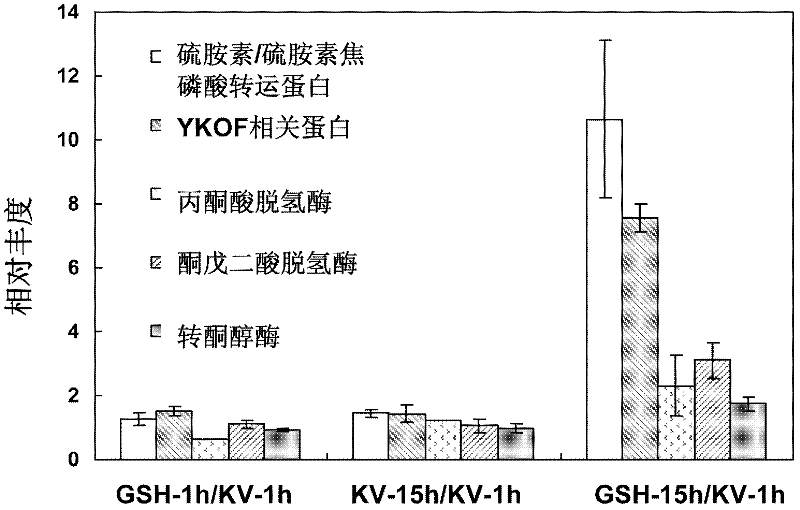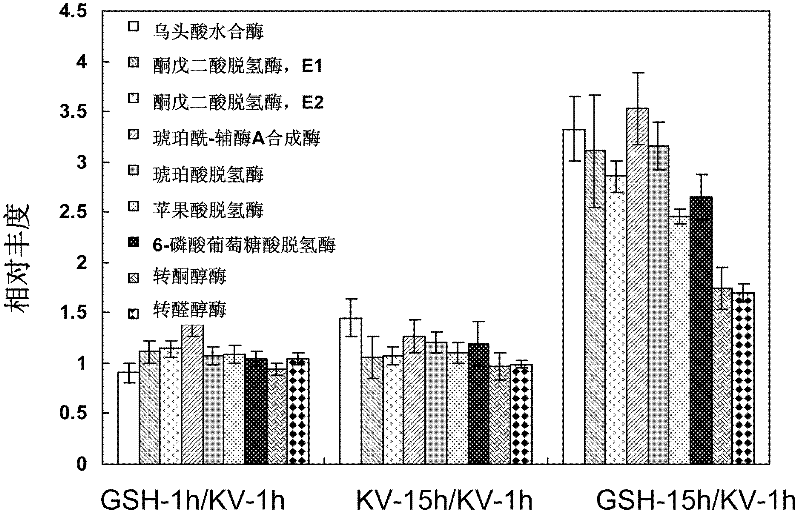Method for detecting intracellular protein changes in process of acting on gluconobacter oxydans by glutathione
A technology of Gluconobacter oxydans and glutathione, which is applied in biochemical equipment and methods, measuring devices, biological tests, etc., can solve the problems of slow growth, low yield, and inability to provide favorable information, so as to improve yield and optimize Effects of the fermentation process
- Summary
- Abstract
- Description
- Claims
- Application Information
AI Technical Summary
Problems solved by technology
Method used
Image
Examples
Embodiment 1
[0040] A method for detecting intracellular protein changes in the process of glutathione acting on Gluconobacter oxidans, characterized in that it comprises the following steps:
[0041] (1) Determination of intracellular protein:
[0042] ① Cell collection and quenching:
[0043]Take 3 parts of Gluconobacter oxydans and inoculate them into fermentation medium A respectively with a volume ratio of 8%, and inoculate another 3 parts of Gluconobacter oxidans into fermentation medium B with a volume ratio of 8%. The culture medium after inoculation was cultured and fermented at 28°C with a rotational speed of 200rpm. During the fermentation process, 1h and 15h were selected as sampling points to take out samples of the fermentation broth, and at 4°C, centrifuged at a rotational speed of 4000rpm to collect the cells in the lower layer and use Wash with phosphate buffer solution with a pH of 7.2, and immediately quench with liquid nitrogen to terminate the metabolic reaction; grin...
Embodiment 2
[0077] A method for detecting intracellular protein changes in the process of glutathione acting on Gluconobacter oxidans, comprising the steps of:
[0078] (1) Determination of intracellular protein:
[0079] ① Cell collection and quenching:
[0080] Get 4 parts of Gluconobacter oxidans and inoculate them into fermentation medium A respectively with a volume ratio of 10%, and inoculate another 4 parts of the Gluconobacter oxidans into fermentation medium B with a volume ratio of 10%. The inoculated culture medium was cultured and fermented at 30°C with a rotational speed of 220rpm. During the fermentation process, 1h and 15h were selected as sampling points to take out samples of the fermentation broth, and at 4°C, centrifuged at a rotational speed of 5000rpm to collect the cells in the lower layer and use Phosphate buffer solution with a pH of 7.3 was washed, quenched with liquid nitrogen, and the metabolic reaction was terminated; ground with liquid nitrogen to break the c...
Embodiment 3
[0103] A method for detecting intracellular protein changes in the process of glutathione acting on Gluconobacter oxidans, comprising the steps of:
[0104] ① Cell collection and quenching:
[0105] Get 5 parts of Gluconobacter oxydans and inoculate them into fermentation medium A respectively with a volume ratio of 16%, and inoculate another 5 parts of the Gluconobacter oxidans into fermentation medium B with a volume ratio of 16%. The inoculated culture medium was cultured and fermented at 32°C with a rotation speed of 250rpm. During the fermentation process, 1h and 15h were selected as sampling points to take out the fermentation broth samples, and the cells in the lower layer were collected by centrifugation at 4°C at a speed of 6000rpm. Wash with phosphate buffer solution with pH 7.4, quench with liquid nitrogen, and terminate the metabolic reaction; grind and break the cells with liquid nitrogen to obtain 5 parts of broken cells collected from medium A for 1 hour of ferm...
PUM
 Login to View More
Login to View More Abstract
Description
Claims
Application Information
 Login to View More
Login to View More - R&D
- Intellectual Property
- Life Sciences
- Materials
- Tech Scout
- Unparalleled Data Quality
- Higher Quality Content
- 60% Fewer Hallucinations
Browse by: Latest US Patents, China's latest patents, Technical Efficacy Thesaurus, Application Domain, Technology Topic, Popular Technical Reports.
© 2025 PatSnap. All rights reserved.Legal|Privacy policy|Modern Slavery Act Transparency Statement|Sitemap|About US| Contact US: help@patsnap.com



